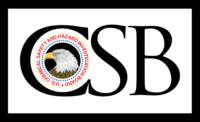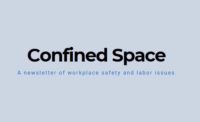Posted with permission from Confined Space, a newsletter of workplace safety and labor issues.
News that President Trump has slated NIOSH for a 40% cut sends shivers through anyone who thinks that strong, well-funded research plays a crucial role in developing effective programs to prevent workplace injuries and illnesses. A couple of weeks ago we reported on another blow to the workplace safety and health research community when it was learned that Liberty Mutual Insurance plans to abruptly shutter its famed Liberty Mutual Research Institute for Safety (LMRIS), laying off its staff of 44 and canceling its ongoing research contracts.
I thought now is a good time to go back for a more critical look at the alleged reasons the Institute is shutting its doors. After the report, Business Insurance and the Boston Globe published articles quoting a Liberty Mutual spokesperson who attempted to justify, or at least explain the Institute’s closure. And I use the word “attempted” deliberately. I spoke with some people who had worked at or with the Institute over many years and asked them about the statements of Liberty Mutual spokesperson, John Cusolito. The general consensus of experts familiar with Institute is that Cusolito spoke with all the credibility of Sean Spicer (my words).
First, Liberty Mutual argues that the services of LMRIS are not really needed any more because “Other organizations and universities are better positioned to do that kind of research,” according to Cusolito.
That statement baffles the experts I spoke with. According to Harvard Professor Jack Dennerlein who has worked with the Institute most of his highly distinguished career, “LMRIS is a unique model based in industry with hard money to do research. It is unlike any other worker safety and health research group in the US. While there are institutions that do workplace safety and health research, none of these places have the collaborative and multidisciplinary approach of the LMRIS.”
Tom Leamon, who headed the Institute from 1991 to 2006, thinks that LMRIS was able to do research others cannot. “Being linked with Liberty mutual they were at the main intersection where research meets practice. No top-tier research groups have had that link to practice.”
What really seemed to set everyone off was Cusolito’s statement that the Institute wasn’t needed because “the nature of work has changed. More people are working remotely or in shared spaces and manufacturing now involves robots doing assembly line work.” Most observers I’ve spoken with think the exact opposite: that issues like robotics and automation are the very issues facing American workers that require more research, not less. Dennerlein notes that “Lots of people are hurt and killed by robots. And the fact that work relationships have changed (e.g. temporary workers) doesn’t mean that the nature of the work itself has changed.”
Leamon thinks that this statement is typical of the myth there are no factory jobs in the US. Nevertheless, even with the changing American workplace, LMRIS was on the cutting edge “They were looking at state of the art topics such as safety culture and climate, psychosocial factors, and the modern office,” according to Leamon.
While Cusolito tries to reassure the public health world that Liberty Mutual will continue to “engage with independent specialists and external partners to assist us in meeting our customers’ evolving safety and accident prevention needs and in delivering exceptional experiences and outcomes,” experienced observers are less confident and the statement betray’s a lack of understanding about how premier institutions like MIT and the University of Massachusetts at Lowell and Amherst work.
Joe Paduda, the principal of Health Strategy Associates and president of CompPharma, in an article in Workers Compensation.com faults Liberty Mutual leadership for its failure to “effectively leverage the terrific work done by the Institute, never really connecting the work it does to support Liberty’s overall ‘lead safer, more secure lives’ brand statement.”
In fact, the real reason the Institute is being closed, according to the general consensus, is to make their balance sheet look better, the company apparently feeling more of an obligation to their shareholders and short term profits than they do to their clients, the profession, and the long term impact on their brand. As the “gig economy” changes the workplace, the workers’ comp business is changing as well. Most workers in the gig economy are independent contractors and are therefore not provided with the traditional benefits packages including workers’ compensation insurance. And Leamon also thinks that the bean counters think they can make more money on shiny customer service brochures than by funding valuable, but less exciting (or profitable), peer reviewed studies.
But Paduda thinks Liberty Mutual is actually betraying its stakeholders, even if the Institute had no direct dollar benefit:” While corporations are obliged to support their shareholders, Liberty is a mutual insurer; its owners are its policyholders. One could, and I am, make the argument that the Institute was and remains prima facie evidence of Liberty’s commitment to its “owners”.”
Leamon thinks back fondly to the words of former Liberty Mutual President Ted Kelly who remarked at the Institutes anniversary in 2004 “In short within these walls, we changed lives. We kept our promise and we honored our pledge to help lead safe more secure lives.”
So what is to be done? According to Steve Newell, a partner at ORCHSE Strategies, LLC, “Now we need to come together as a community and figure out what can be done to plug the gap. Maybe that begins by our lobbying to increase the budget for NIOSH.”
Or maybe it begins by not cutting NIOSH’s budget by 40%.
Click here to visit Confined Space.




